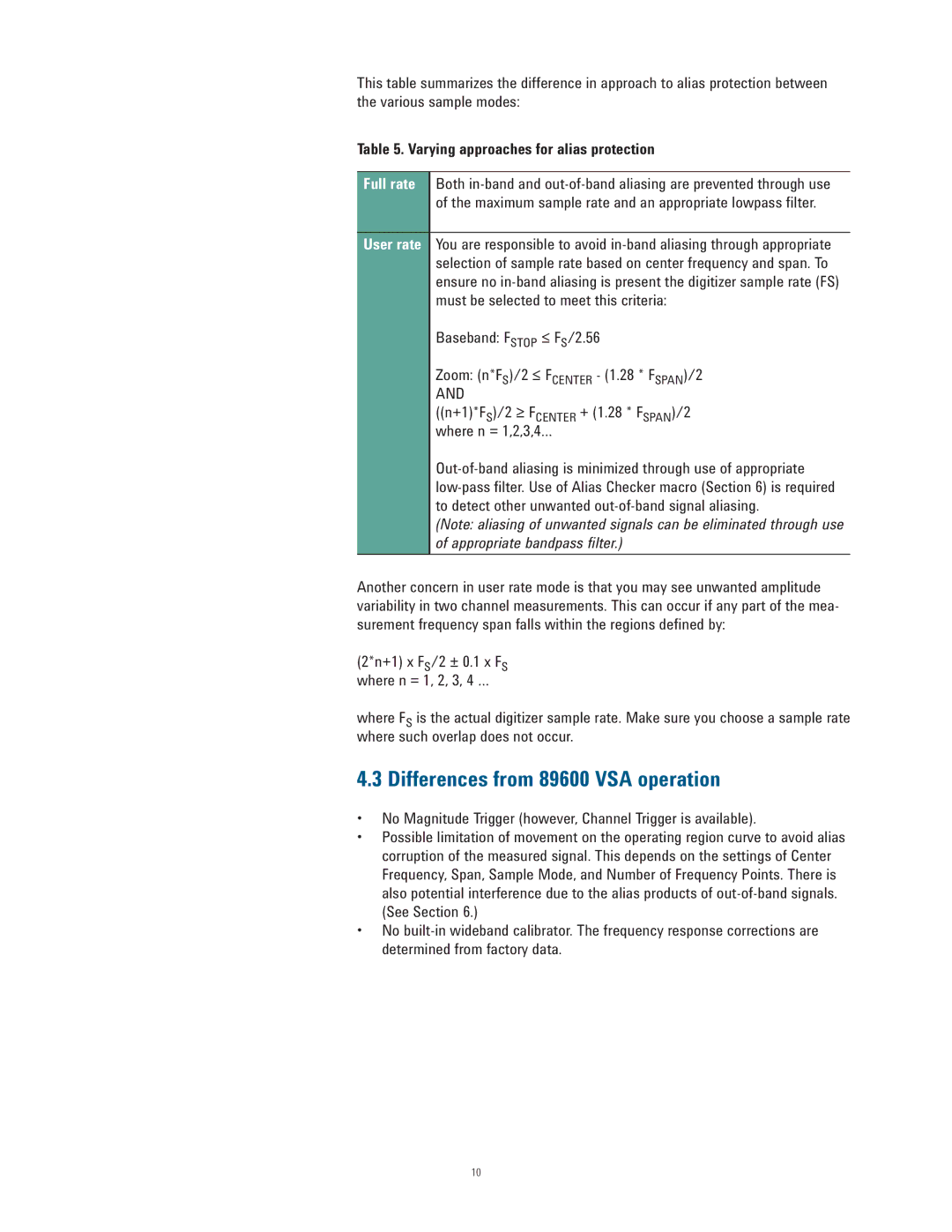89600 specifications
Agilent Technologies, a leading player in the test and measurement sector, has developed the 89600 VSA (Vector Signal Analysis) software, a powerful tool designed for a wide variety of signal analysis applications. This software is crucial for engineers and researchers developing and testing wireless communication systems, radar technologies, and other complex signal environments.One of the main features of the Agilent 89600 is its capability to analyze both analog and digital signals with high precision and flexibility. It supports a broad range of modulation formats used in modern communication systems, including LTE, Wi-Fi, GSM, and many others. This extensive modulation support enables users to test their designs against industry standards and protocols, ensuring compliance and operational integrity.
The 89600 VSA software excels in its real-time analysis capabilities, which is critical for evaluating transient signal behavior and understanding time-varying signals. With its advanced algorithms and fast processing capabilities, users can perform real-time demodulation of complex signals, which is vital for debugging and optimizing communication systems. The software also supports offline analysis, allowing engineers to capture and analyze signals at their convenience.
Another standout characteristic of the 89600 software is its intuitive user interface, which streamlines the setup process and enhances user experience. The drag-and-drop functionality allows for easy configuration of measurement setups, while comprehensive visualization tools provide deep insights into the signal characteristics. Users can visualize modulation quality, spectral components, and error vectors through various graphical representations.
The software integrates seamlessly with Agilent's hardware spectrum analyzers and signal generators, offering a holistic solution for signal generation and analysis. It also supports a wide range of signal inputs, from hardware-based vector signal generators to recorded data files.
Moreover, the flexibility of the Agilent 89600 is enhanced through its modular architecture, which allows users to easily add new measurement capabilities via optional software packages. This adaptability ensures that the tool stays relevant as communication technologies evolve.
In summary, Agilent Technologies' 89600 VSA software combines advanced signal analysis capabilities with user-friendly features to provide a comprehensive solution for communication engineers. Its ability to handle multiple modulation formats, real-time analysis, and robust visualization tools makes it an essential resource for anyone involved in the development and testing of signal-based technologies.

